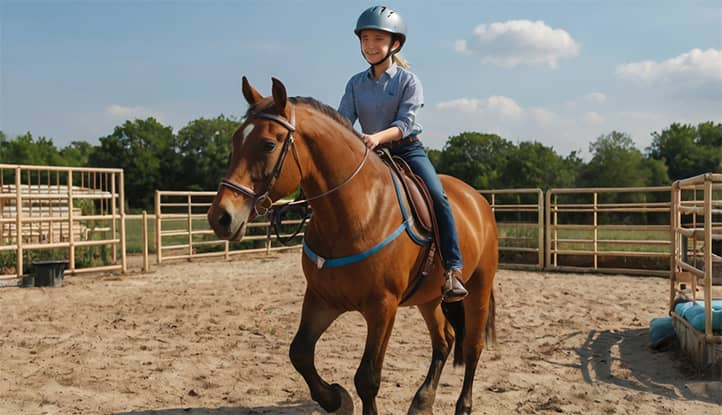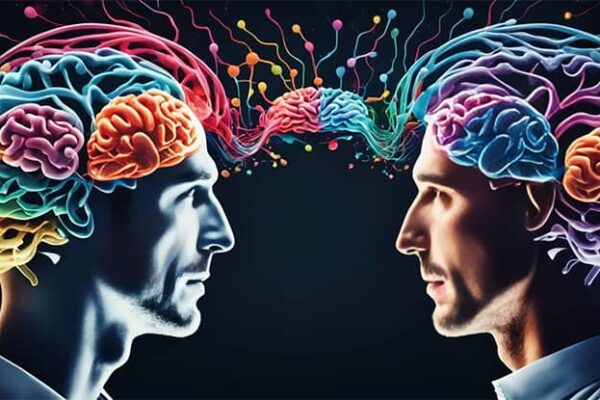Hippotherapy (from the Greek “hippos” – horse) is a type of therapy that combines elements of physiotherapy, psychotherapy, and horse riding. Under the guidance of specialists, patients perform various exercises, interact with and engage with horses, which positively influences both their physical and mental well-being.
The origins of hippotherapy go back to ancient times. As early as Ancient Greece and Rome, horseback riding was used for therapeutic purposes. In its modern form, hippotherapy began to develop in the mid-20th century, when scientists started systematically studying its benefits. Since then, the method has spread worldwide and continues to improve.
Hippotherapy is gaining more attention from scientists and medical professionals for several reasons. Firstly, it is a drug-free and environmentally friendly form of therapy, which makes it appealing to many patients. Secondly, hippotherapy has shown impressive results in the treatment and rehabilitation of various diseases and disorders.
The successful application of hippotherapy has been noted in many countries. For example, in the USA, Germany, and the UK, specialized centers have been established where patients can undergo treatment under the supervision of qualified professionals. In Ukraine, hippotherapy is also gaining popularity, especially in the rehabilitation of children.
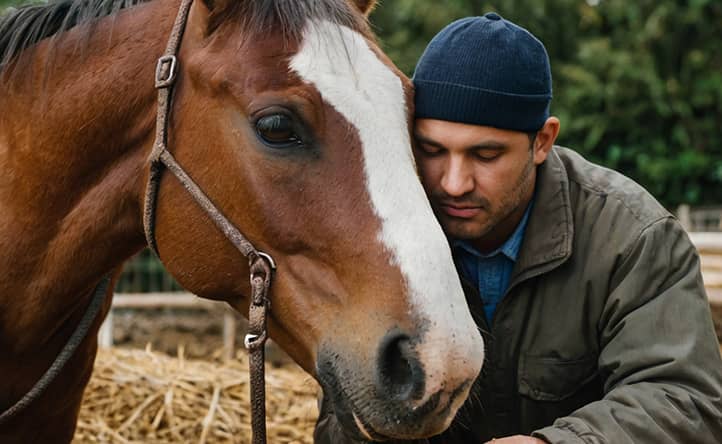
Scientific Foundations of Hippotherapy
At first glance, hippotherapy may seem like just a pleasant hobby or a way to spend time outdoors in the company of horses. However, behind this method lies a solid scientific foundation, confirming its therapeutic value. Modern research uncovers the unique mechanisms behind the healing effects of hippotherapy on the human body.
Horses, these majestic and intelligent animals, have the ability to evoke deep emotional responses in people and trigger a whole cascade of physiological reactions. The combination of physical movement during riding, tactile contact with the horse, and emotional interaction with it sets off complex processes that affect both the body and the psyche.
Scientists are carefully studying these processes, identifying specific neurophysiological and psychological effects of hippotherapy. Cutting-edge technologies such as functional magnetic resonance imaging and hormonal profile analysis provide unprecedented opportunities to understand the mechanisms underlying this unique method of therapy. The obtained data not only convincingly prove the benefits of hippotherapy but also open up new prospects for its further development and improvement.
Physiological Effects of Hippotherapy
During hippotherapy sessions, the proprioceptive sensory system, responsible for the sense of balance and movement coordination, is stimulated. Additionally, many muscle groups are engaged during horseback riding, which helps to strengthen and develop them.
Hippotherapy activates various parts of the brain responsible for motor skills and coordination. This happens thanks to the specific oscillatory movements of the horse, which mimic human walking. Thus, correct movement patterns are stimulated and reinforced during the sessions.
Numerous scientific studies confirm the positive influence of hippotherapy on patients’ physical condition. For example, one study conducted in Germany noted improvements in balance, gait, and movement coordination in children with cerebral palsy after a course of hippotherapy.
Psychological Effects of Hippotherapy
In addition to the physical effects, hippotherapy has a beneficial impact on patients’ psychological well-being. Interaction with horses helps reduce stress, anxiety, and depression. Moreover, interaction with these intelligent and sensitive animals fosters the development of empathy, boosts self-esteem, and improves communication skills.
Studies show that during hippotherapy sessions, patients experience a decrease in the stress hormone cortisol and an increase in oxytocin, the hormone responsible for attachment and trust. This contributes to relaxation, reduced anxiety, and improved mood.
In one study conducted in the USA, it was found that after a 12-week course of hippotherapy, patients with post-traumatic stress disorder showed a significant reduction in symptoms of depression and anxiety. Similar results were obtained in other studies focused on the psychological effects of hippotherapy.
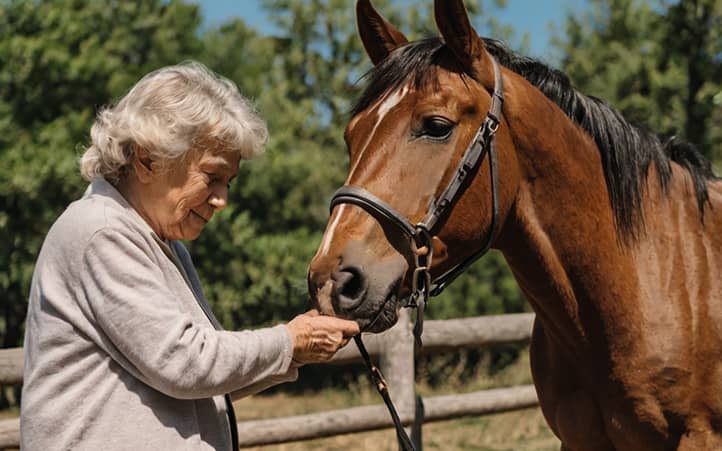
Application of Hippotherapy in Medicine
The scientifically proven effectiveness of hippotherapy has opened up broad prospects for its application in various fields of medicine. From pediatrics to geriatrics, from physical rehabilitation to psychotherapy – this method finds its unique place everywhere, helping patients cope with a variety of health issues.
Hippotherapy is especially valuable in working with children suffering from developmental disorders and chronic illnesses. The playful nature of the sessions and the opportunity to interact with horses make the therapy process engaging and motivating for young patients, significantly enhancing its effectiveness.
However, hippotherapy is not just a success story for children. Adults and the elderly also benefit greatly from this method, using it to recover from injuries, rehabilitate after strokes, and treat mental disorders. The unique combination of physical and psychological effects makes hippotherapy a truly universal tool for maintaining health at all stages of life.
Hippotherapy for Children
Hippotherapy is particularly effective in working with children. Thanks to the playful format and interaction with horses, children are more receptive to therapy and more willing to participate.
Hippotherapy has shown impressive results in the treatment of cerebral palsy (CP). Regular sessions help improve movement coordination, develop muscle strength and endurance, and increase concentration in children with CP.
Moreover, hippotherapy is widely used in working with children suffering from autism and other autism spectrum disorders. Interaction with horses promotes the development of social skills, improves communication, and fosters an emotional connection with the world around them.
Examples of the successful application of hippotherapy in treating children can be found worldwide. For example, in the USA, the program “Horses as Complementary Therapy” helps children with autism undergo a course of hippotherapy. The results showed significant improvements in the social and communication skills of the program’s participants.
Hippotherapy for Adults
Hippotherapy plays an important role in the rehabilitation of adult patients after injuries, strokes, spinal surgeries, and other serious conditions. Horseback riding helps restore impaired motor functions, improve movement coordination, and increase overall physical activity.
In addition to physical rehabilitation, hippotherapy is effective in treating psychological disorders in adults. It has shown good results in the therapy of post-traumatic stress disorder (PTSD), depression, anxiety disorders, and other mental health conditions.
The benefits of hippotherapy for adult patients are supported by numerous scientific studies and clinical trials. For example, in one study conducted in the UK, stroke patients saw significant improvements in balance, gait, and overall physical activity after a course of hippotherapy.
Another study conducted in Denmark explored the effects of hippotherapy on patients with PTSD. The results showed that after an 8-week course of sessions, participants experienced a significant reduction in symptoms of PTSD, depression, and anxiety.
Hippotherapy for the Elderly
As people age, they increasingly face health problems such as arthritis, Parkinson’s disease, balance issues, and other conditions. Hippotherapy can be an effective complement to traditional treatments for these conditions.
Horseback riding helps improve joint mobility, develop muscle strength and endurance, and improve coordination and balance in elderly patients.
Research shows that hippotherapy not only helps treat specific conditions in older adults but also positively affects their overall quality of life. Interaction with horses reduces stress levels, improves mood, and motivates active engagement.

Research and Evidence
As interest in hippotherapy from the medical community grows, the volume of scientific research in this field is rapidly increasing. Scientists from various countries are involved in large-scale projects aimed at studying the mechanisms of hippotherapy and confirming its clinical effectiveness.
Modern neuroimaging methods allow real-time tracking of the activity of different brain regions during hippotherapy sessions. These data help better understand how interaction with horses influences the neural networks responsible for motor functions, emotions, and cognitive processes.
In parallel with fundamental research, large clinical trials are being conducted to assess the practical effectiveness of hippotherapy in treating specific conditions. Randomized controlled trials involving hundreds of patients provide strong evidence of the benefits of this method in stroke rehabilitation, autism therapy, depression treatment, and many other conditions.
Review of Key Research
One of the largest studies was conducted by scientists from Germany and Austria in 2014. It involved 228 children with cerebral palsy, who underwent a year-long course of hippotherapy. By the end of the experiment, most participants showed significant improvement in motor functions, movement coordination, and overall physical condition.
Another large study conducted in the USA in 2018 examined the effects of hippotherapy on patients with PTSD. The results showed that after an 8-week course of sessions, participants experienced a significant reduction in PTSD symptoms, depression, and anxiety, as well as an overall improvement in quality of life.
Analyzing the results of numerous studies, scientists conclude that hippotherapy is an effective therapeutic method for various age groups and different health conditions. It has a comprehensive impact on the physical and psychological state of patients, contributing to their rehabilitation and improved quality of life.
However, despite the encouraging results, scientists note the need for additional research with stricter controls and larger sample sizes to obtain more accurate and reliable data.
Clinical Trials and Meta-Analyses
In recent years, in addition to individual studies, several large clinical trials on hippotherapy have been conducted. One such study – an international project organized in 2019 by scientists from the UK, Germany, Italy, and Spain – involved more than 500 children with various forms of cerebral palsy.
After a year-long course of hippotherapy, most participants showed significant improvement in motor functions, movement coordination, and overall physical condition compared to the control group.
Another large clinical trial conducted in the USA in 2021 examined the effects of hippotherapy on patients with anxiety disorders. After a 12-week course of sessions, participants showed a significant reduction in anxiety levels, improved mood, and enhanced quality of life.
In addition to individual studies and clinical trials, meta-analyses and systematic reviews summarizing the results of multiple studies on hippotherapy have been conducted. One of the most authoritative is the meta-analysis published in 2020 in the journal “Physical Therapy and Rehabilitation.”
This meta-analysis analyzed data from 27 randomized controlled trials involving more than 1,500 patients with various conditions. The results showed that hippotherapy has a positive effect on the physical and psychological well-being of patients and can be considered as an effective additional therapy.
Another large systematic review, published in 2022 in the journal Rehabilitation, focused on the use of hippotherapy in the treatment of children with autism. The authors analyzed 18 studies and concluded that hippotherapy can improve social and communication skills and reduce behavioral problems in children with autism spectrum disorders.

Practical Application of Hippotherapy
Despite the solid scientific foundation and impressive clinical trial results, implementing hippotherapy into real medical practice comes with several challenges. Ensuring patient safety, adhering to strict protocols, and standardizing techniques are just some of the key tasks facing specialists in this field.
A crucial factor is the quality training of personnel – hippotherapy instructors, physiotherapists, and psychologists, who must possess not only deep knowledge in their respective fields but also specific skills in working with horses. The effectiveness and safety of hippotherapy sessions directly depend on their professionalism.
In addition, logistical issues must be addressed, including the creation and maintenance of specialized hippotherapy centers, acquiring and caring for horses, and ensuring the accessibility of this method to a wide range of people. Only a comprehensive approach, combining the efforts of scientists, medical professionals, instructors, and government structures, will allow the full realization of the vast therapeutic potential of hippotherapy.
Organization of Hippotherapy Sessions
For conducting hippotherapy sessions, specially equipped areas and arenas, as well as experienced horses that have undergone appropriate training, are required. Sessions should be conducted under the supervision of qualified hippotherapy instructors, who design exercise programs based on the features and needs of each patient.
The duration and intensity of sessions vary depending on the patient’s age, physical condition, and individual characteristics. Typically, a hippotherapy course consists of a series of sessions held at a set frequency (e.g., 1-2 times per week).
To achieve maximum therapeutic effect, specialists from various fields are involved in the hippotherapy process. Hippotherapy instructors are responsible for organizing and conducting sessions, determining exercise programs, and ensuring patient safety.
Psychologists and psychotherapists help patients cope with emotional and psychological issues that arise during treatment. They may also use elements of animal-assisted therapy to strengthen the emotional bond between the patient and the horse.
Physiotherapists and physical therapy specialists develop exercise programs aimed at restoring motor functions and improving patients’ physical conditions.
Close collaboration between all these specialists ensures a comprehensive approach and maximizes the effectiveness of hippotherapy.
Safety and Contraindications
Despite all the benefits of hippotherapy, it is important to remember that working with horses requires strict safety rules. Instructors must undergo special training, have experience working with horses, and be able to prevent and resolve potentially dangerous situations.
Before sessions begin, patients are instructed on safety techniques and provided with necessary protective gear, such as helmets and other equipment. During sessions, instructors closely monitor compliance with safety rules.
Like any other therapeutic method, hippotherapy has certain contraindications and limitations. These include severe forms of epilepsy, serious vision and balance disorders, and acute mental disorders. Additionally, severe allergies to horses can be a contraindication.
Before starting a hippotherapy course, the patient must undergo a medical examination to rule out any contraindications. In some cases, doctors may recommend limiting the intensity or duration of the sessions.
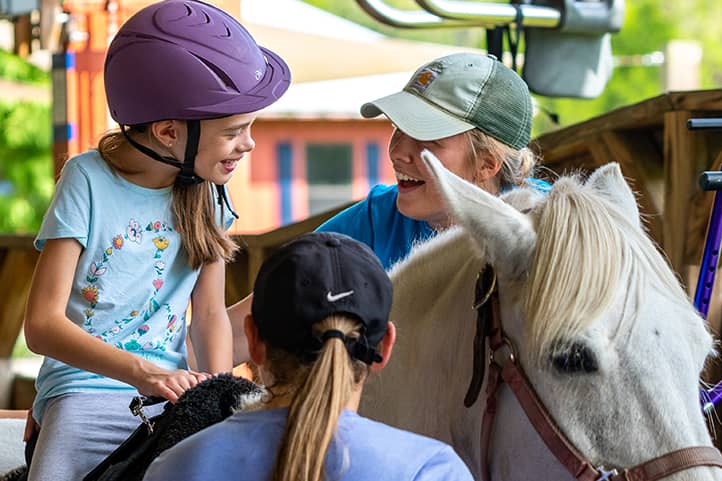
Conclusion
Hippotherapy is a unique method that combines the benefits of physical and psychological therapy, clearly demonstrating how closely humans and nature are connected. Numerous studies prove its effectiveness in the treatment and rehabilitation of various diseases and disorders in patients of all ages.
Horses possess an amazing ability to help people overcome physical and psychological challenges. Interaction with horses has a comprehensive impact on the human body, improving physical and psychological conditions, enhancing motor functions, reducing stress and anxiety levels, and improving the overall quality of life.
Hippotherapy shows that alternative treatment methods based on the forces of nature can be just as effective as traditional medicine. The close contact with horses during hippotherapy sessions helps patients reconnect with the world around them, achieve emotional balance, and recharge with positive energy.
In the future, we can expect further expansion of hippotherapy and its application in more areas. As scientific data accumulates and methods improve, hippotherapy will become an integral part of medical practice and will increasingly be used in combination with traditional treatment methods.
Of course, the development of hippotherapy requires extensive research, standardization of methods, and improved accessibility. But it is already clear that it opens new horizons in treatment and rehabilitation, reminding us of the healing properties of nature and the importance of harmonious interaction between humans and animals. Hippotherapy certainly deserves close attention from scientists, medical professionals, and anyone searching for innovative ways to maintain health.
Recommended Literature
- “Horses and Humans: The Evolution of Human-Equine Relationships” – In this book, author Sandra L. Olsen explores the interaction between humans and horses throughout history, including hippotherapy. She examines various aspects of using horses for therapeutic purposes.
- “Equine-Assisted Therapy and Learning with At-Risk Young People: Horses as Healers” – This book explores the use of hippotherapy in working with at-risk youth. Author Hannah Burgon analyzes how interaction with horses can promote mental and emotional development.
- “How Change Happens in Equine-Assisted Interventions” – This practical guide is for mental health professionals who use horses in therapy. Authors Noreen W. Esposito and Angela K. Fournier offer techniques and exercises for working with patients.
- “Handbook on Animal-Assisted Therapy: Foundations and Guidelines for Animal-Assisted Interventions” – Written by Aubrey H. Fine, this guide discusses various types of therapy involving animals, including hippotherapy, and provides theoretical foundations and practical recommendations for implementing such interventions.
- “The Clinical Practice of Equine-Assisted Therapy: Including Horses in Human Healthcare” – Here, author Leif Hallberg shares his experience working with patients using horses for rehabilitation. The book offers an overview of the clinical practice of hippotherapy, including real case studies and treatment methods.
